Reassuringly Unhindered By Progress…
Nestled in the heart of the Atlas Mountains, ancient customs and rituals endure, echoing the practices of our community's ancestors. The intricate journey of crafting a handmade Amazigh rug unfolds with a sacred ritual—preparing the loom and initiating the weaving, a moment steeped in cultural reverence for Amazigh women.
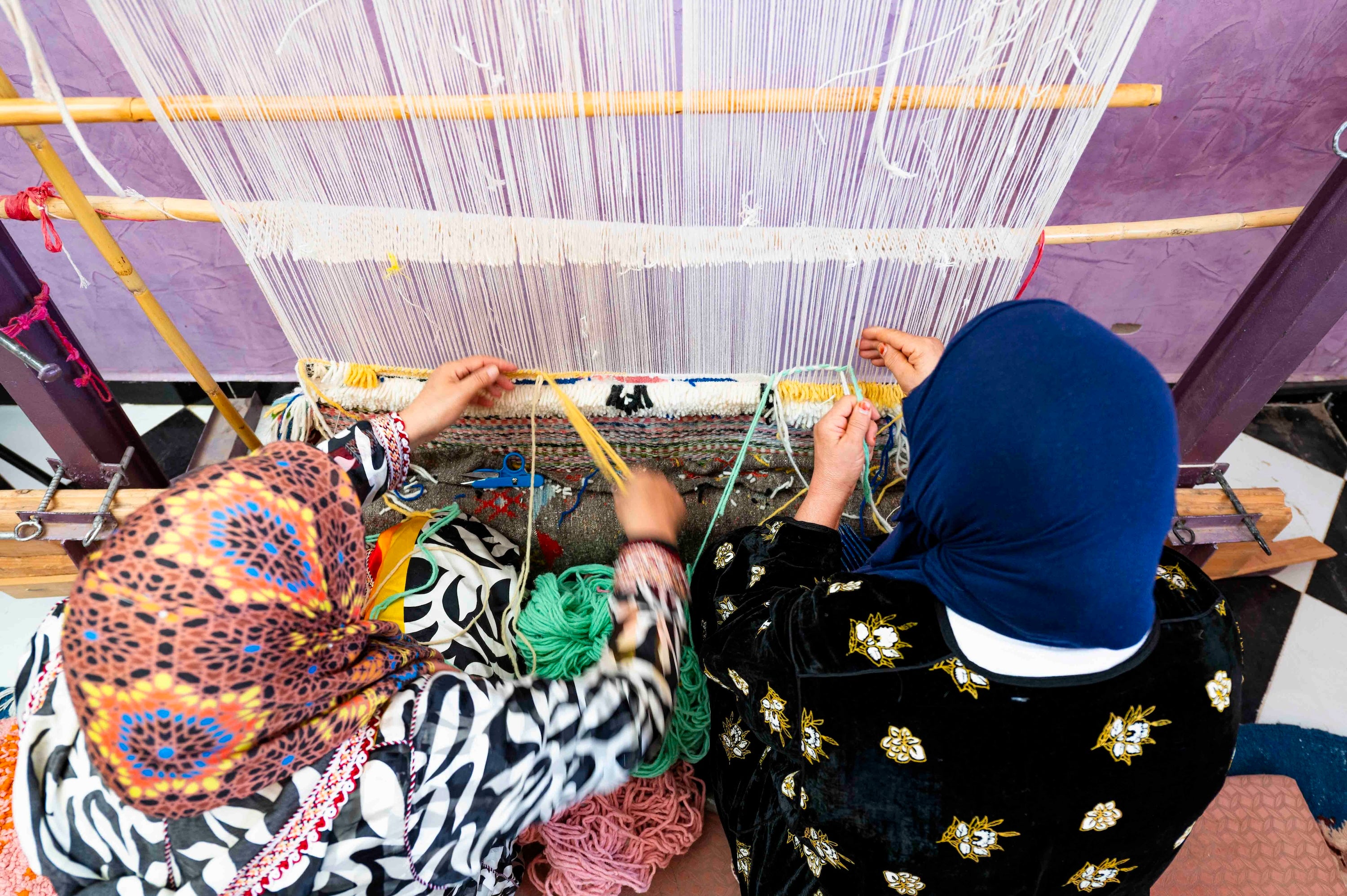
Making the Rugs
This ritual is a collective celebration, marked by a special meal, shared sweets, and almonds, symbolising the profound significance of the impending weaving. As the aroma of the feast permeates the air, women gather, invoking blessings for the artistic endeavour about to commence — a tradition deeply connected to the creation of handcrafted Moroccan rugs.
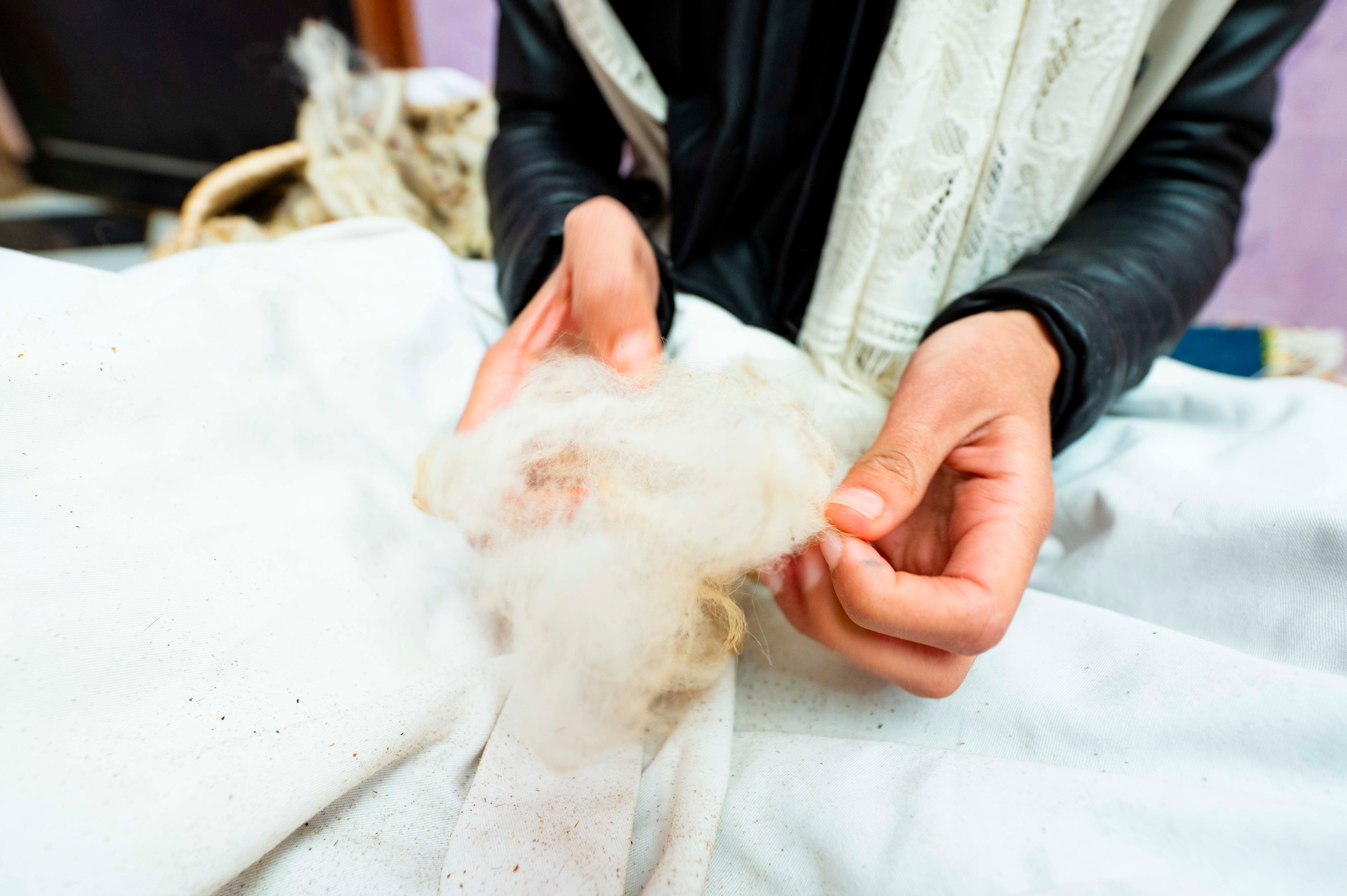
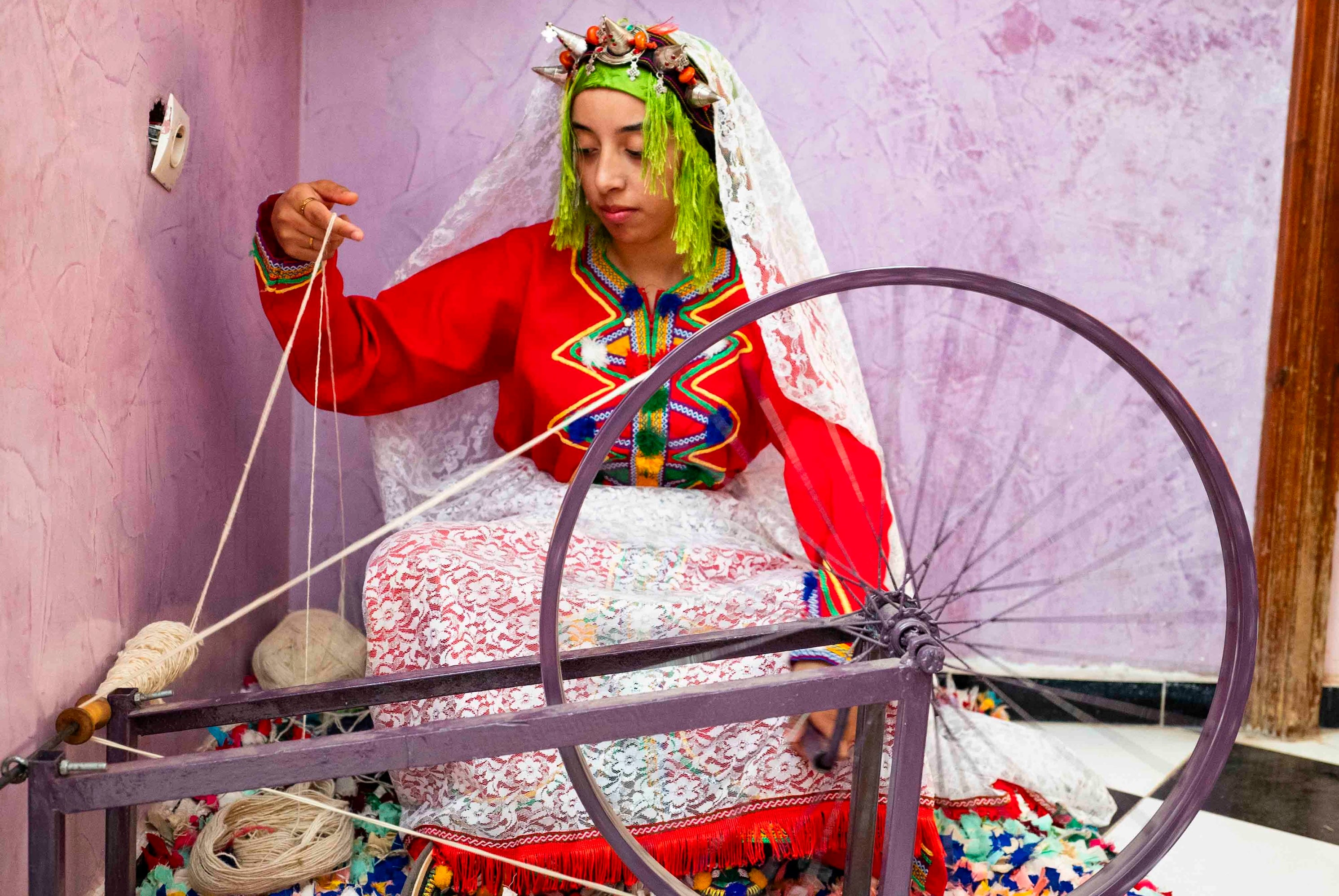
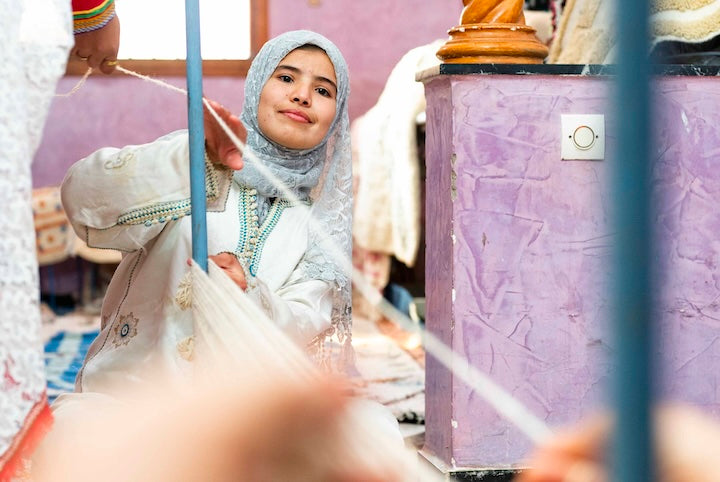
The loom, meticulously assembled, signifies each thread's connection to tradition and heritage. Seated around it, adorned in vibrant colours reflecting the natural hues of their surroundings, the women begin their rhythmic dance. Using natural wool, the loom's hypnotic sounds resonate as artisanal skills, passed down through generations, breathe life into intricate patterns, infusing each handmade creation with soulful intent.
The Berber rug becomes a tapestry of blessings, believed to carry the prayers and positive energy of the dedicated women crafting it. In this way, our Moroccan eco-friendly rugs embody both cultural legacy and a commitment to sustainability.

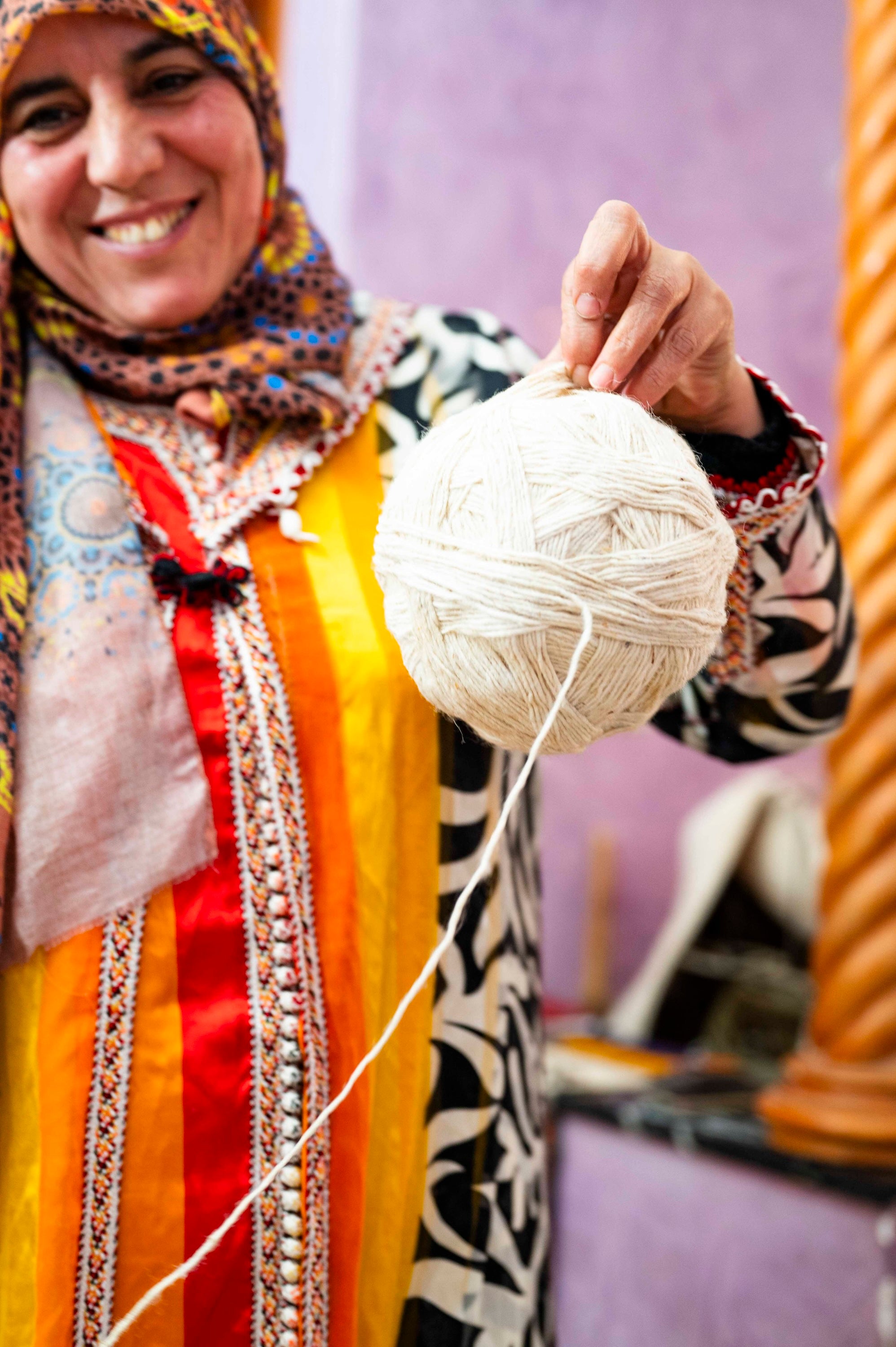
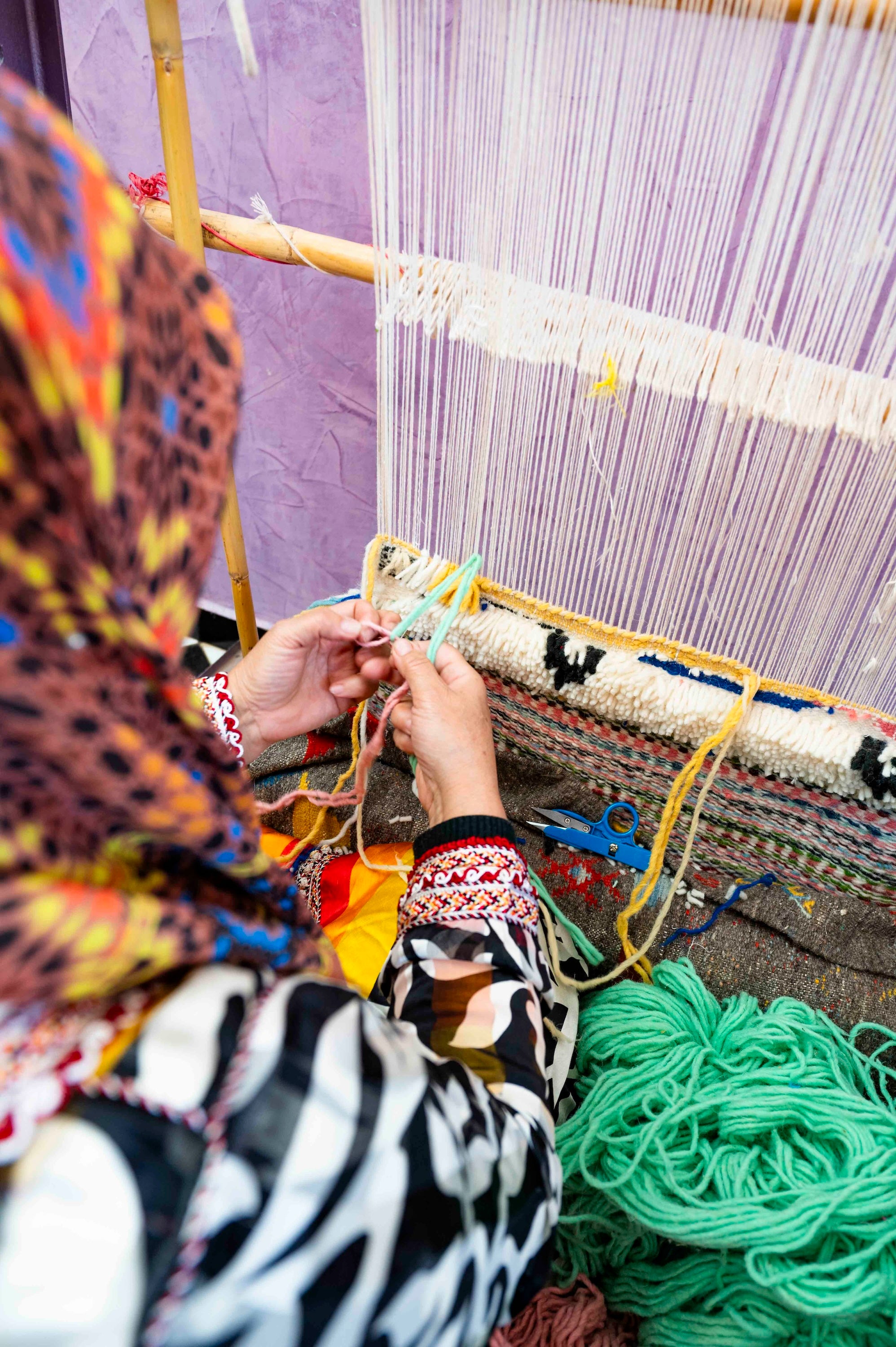
This meticulous process unfolds slowly, far from the haste of modern production. With no shortcuts taken, the average Berber rug takes up to a year to complete. Following this, a conscientious washing process, repeated up to five times, not only cleanses the rug but minimises shedding. This dedication to craftsmanship is what makes our Luxury Moroccan rugs for sale in UK truly timeless and unique.

